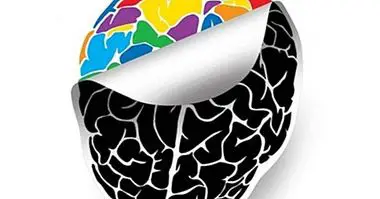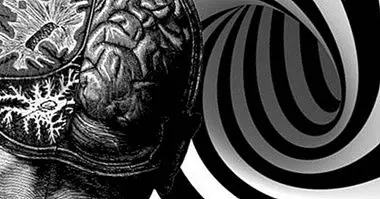Extrapyramidal symptoms: types, causes and treatment
Since the synthesis of the first antipsychotics, patients with schizophrenia have seen how their quality of life has increased considerably. However, not everything is a path of roses. Antipsychotics, like any psychopharmaceutical, have adverse effects that must be cured in health. A group of symptoms caused by the use of classical antipsychotics are the so-called extrapyramidal symptoms, which are characterized by affecting the movement of the patient .
To avoid complications, these symptoms should be detected quickly and treated as soon as possible. Let's briefly review what extrapyramidal symptoms are and what are the causes that cause it.
- Related article: "Types of antipsychotics (or neuroleptics)"
What are extrapyramidal symptoms?
They are a set of symptoms produced by the use of psychotropic drugs that manifest themselves by altering the motor . Not all patients show all the extrapyramidal symptoms, only a few are enough to be certain that what is suffered is a condition caused by the adverse effects of the drugs.
Even though They used to be characteristic of psychotic patients taking antidepressants , the development of increasingly safe and selective drugs has allowed these tables are not so frequent. In those who took classical antipsychotics, the presence of extrapyramidal symptoms occurred in up to 75% of them, with the consequent reduction in quality of life and the obstacle that implies towards adherence to treatment. Older women seem to be the demographic most prone to suffer extrapyramidal symptoms.
Your guys
Typically we can divide extrapyramidal symptoms into four groups , all of them having in common that they affect the motor behavior of the individual. The most characteristic extrapyramidal symptoms are akathisia, dystonia, pseudoparkinsonism and dyskinesia.
1. Acatisia
Perhaps the most frequent extrapyramidal symptom is akathisia. It can be understood as a form of motor restlessness that can not be stopped. Patients say they can not be completely still, so they can not sleep well and their attention leaves much to be desired. It seems that they are nervous all the time, they do not stop swinging , walk to one side and another, move the feet and hands, twisting the neck, and so on.
It is a very uncomfortable and exhausting symptom for those who suffer it and can be violent for those who surround the patient and do not know the reason for the concern, stigmatizing the patient and isolating him even more.
- Related article: "Acatisia (psychomotor agitation): what it is, symptoms and causes"
2. Dystonia
Extrapyramidal symptoms They also include involuntary contractions of the muscles of the neck, upper trunk and the extremities. Almost as if it were the characteristic tics of the Gilles de la Tourette Syndrome or its ecopraxias. Most dystonias occur in the upper part of the body, especially in the face.
The patients make extravagant grimaces that further accentuate the strange behavior caused by the rest of extrapyramidal symptoms. Complications of this symptom can cause muscle problems such as torticollis or chronic muscle contractions.
3. Pseudoparkinsonism
This extrapyramidal symptom simulates the symptoms of Parkinson's disease , but its sudden appearance makes clear what is its cause. We speak of tremors in the fingers, weakness of the voice, disappearance of the swing of the arms when walking due to a great muscular rigidity, and so on.
It can also be accompanied by bradypsychia, that is, slow thinking when thinking of situations that should not involve great effort. With the continued use of antipsychotics, pseudoparkinsomism is also manifested through rabbit syndrome , which are tremors of the lips and chewing movements.
- Maybe you're interested: "Parkinson's: causes, symptoms, treatment and prevention"
4. Late dyskinesia
It is involuntary movements of the musculature, almost always facial. Unlike dystonia, dyskinesias do not occur through contractions. Are relatively complex and stereotyped movements, such as pulling out or bending the tongue , frown, make sucking movements, etc. It receives the name of late since it can take months or years to appear.
What is its cause?
Extrapyramidal symptoms occur when taking psychotropic drugs that block dopamine D2 receptors.Positive psychotic symptoms such as hallucinations or delusions occur due to overactivation of the dopaminergic pathways, so that antipsychotics have the task of blocking the receptors in these routes and quenching the dopamine storms that are generated.
In passing, they also block receptors in the basal ganglia, altering the person's motor skills and giving rise to extrapyramidal symptoms. It is not the only mechanism involved, it is known that Both serotonin and noradrenaline and acetylcholine are also involved in the appearance of these symptoms.
For this reason, typical antipsychotics, which mainly affect the D2 dopamine receptors, are the main cause of extrapyramidal symptoms. This is one of the reasons why he urged the development of atypical or second generation antipsychotics, which also include serotonergic action, causing this problem much less frequently.
Are extrapyramidal symptoms treated?
More than treating, what is done is a withdrawal of the drugs that cause it. When the motive is typical antipsychotics, nowadays in disuse as a basic treatment, what is done is to replace them with some atypical one. In some cases, reducing the dose is enough to quickly end the symptoms.
When you want to deal with very unpleasant acute reactions, it is possible to administer anticholinergics or antiparkinsonians, which relieve suffering very quickly. However, it is necessary to take good care of the dose since it is about drugs that can be lethal if one suffers an overdose with them. Normally, for the prevention of extrapyramidal symptoms, it is enough to examine their presence or not by means of outpatient visits to the psychiatrist since it is easily solved.



















